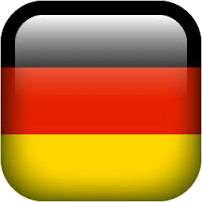Setup Parameters - IMU03/YAW03

Timer
The timer value is in milliseconds (ms). A smaller value means data will be sent more frequently, a larger value means data will be sent less frequently. The range of values that can be entered is 0 to 65535, however the minimum value that should be entered is 10. Below this level data values may be repeated on successive cycles. If a value of 0 is entered, the IMU04 will change it to 1000 on the next power cycle.
Frequency output can be calculated as follows:
Freq = (1/Timer) * 1000
The timer value for a required frequency can be calculated as follows:
Timer = (1/Freq) * 1000
Here are some example timer values are shown against the frequency output.
| Timer Value (ms) | Frequency (Hz) |
|---|---|
| 10 | 100 |
| 50 | 20 |
| 100 | 10 |
| 400 | 2.5 |
| 1000 | 1 |
Baud Rate
Baud rate sets the bit rate of the CAN messages (not the frequency at which the messages are sent). There are four options that baud rate can be set to – 1000 kbit/s, 500 kbit/s, 250 kbit/s and 125 kbit/s. Most light vehicles have a baud rate of 500 Kbit/s, so this is the default setting. If you wish to change the baud rate, use the main settings tab within VBOX Setup software.
Extended Identifiers
The extended identifiers box can be marked or unmarked. If it is unmarked, the CAN identifier type will be standard (11 bit). If it is marked, the CAN identifier type will be extended (29 bit). The standard identifier type allows 2048 different CAN message identifiers or message “names”. The extended identifier type allows 436207616 different CAN message identifiers. The identifier type should be set to match the CAN data logging equipment that the IMU04 is connected to.
Request and Response Identifiers
The request identifiers only have an effect in user polled CAN mode. They set the identifier values that the IMU04 will filter for. If a CAN message is received that matches a request identifier then the IMU04 will respond by sending the corresponding channel data on the corresponding response identifier. Note: All channels can have the same request identifier – this means that on receipt of a single CAN message the IMU04 will respond with all channels of data. The response identifiers MUST all be different.
In timed mode the channel data will be sent at intervals with the corresponding response identifier – the request identifiers have no effect.
When using standard identifiers the maximum value for the identifiers is 0x7FF. Entering a value higher than this may cause unexpected results, for instance a response identifier of 0x00FFAA23 will result in a message being sent with identifier 0x223. To avoid anything unexpected, the request and response identifiers should be set appropriately for use with standard identifiers.
